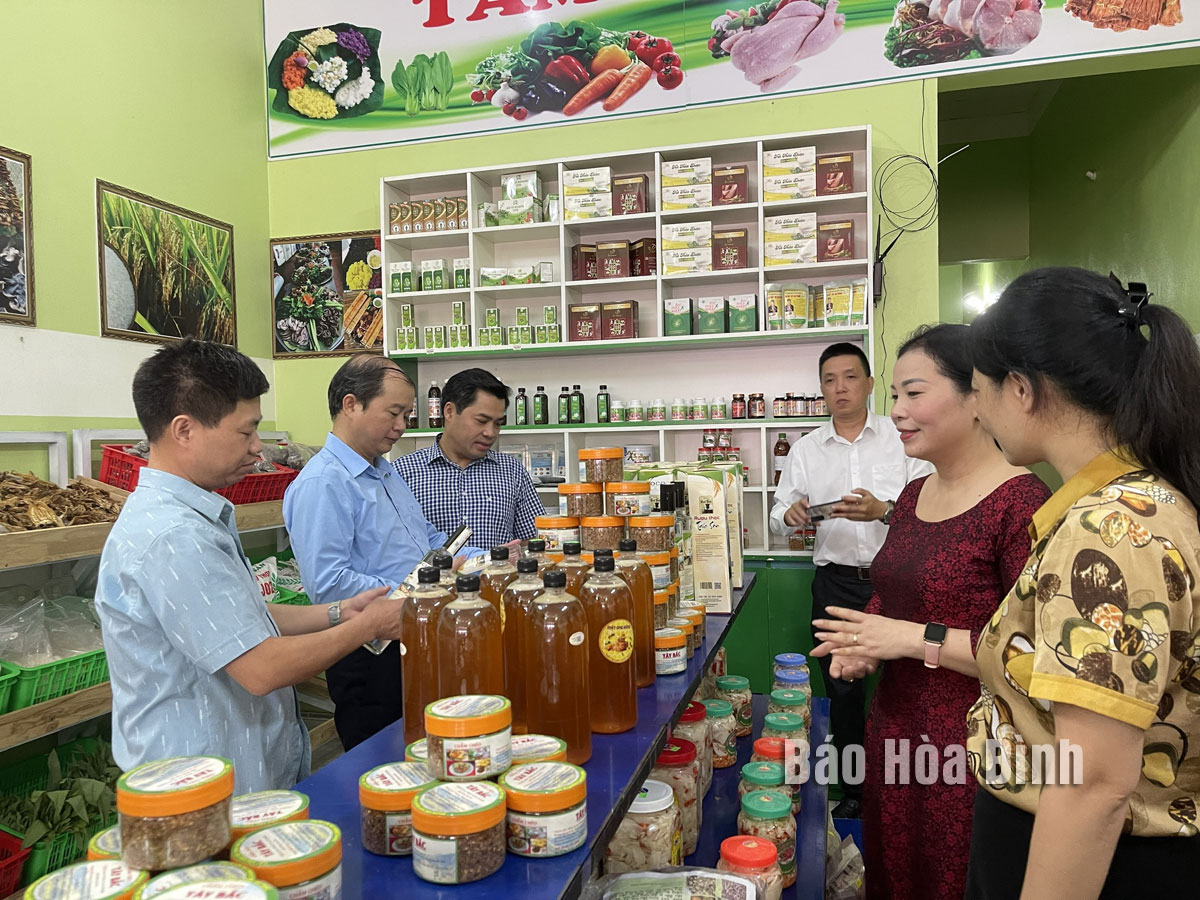
(HBO) – In an attempt to promote local agricultural products, over the past time, farmers’ unions at all levels in the northern mountainous province of Hoa Binh have carried out practical activities to assist their members to produce and develop local products under the "One commune - One product” (OCOP) programme, contributing to raising incomes for the locals.

Organic
farm produce and OCOP products produced by farmers in the province are
displayed for sale at a shop in Mu residential quarter, Da Bac town, Da Bac
district.
In recent years, farmers' unions at all levels in the province
have proactively organised supporting programmes to help their members develop
typical products and promoting OCOP products whilebuilding cooperative
groups and developing the collective economy.
According to statistics from the provincial Farmers' Union,
during 2018 - 2023, the union has supportedthe establishment of 72 new
cooperatives with 586 members, 329 cooperative groups with 4,973 members,
bringing the total number of cooperatives in Hoa Binh to 226 and 492
cooperative groups.
Besides, 1,136 science and technology training courses on
farming, animal husbandry, aquaculture for 66,000 members were opened during
the period.
In addition, the provincial union has signed cooperation
agreements with its counterparts in other provinces and cities, as well as the
post office and Viettel branch in Hoa Binh to promote local products in other
localities and e-commerce platforms. To date, there have been nearly 2,980 agricultural
and OCOP productshave been posted on e-commerce platforms including
Postmart.vn,Voso.vn, among others.
The
effectiveness of these activities has brought about positive changes in
socio-economic development in the province.Agriculture has shifted strongly
from traditional to commodity production. In particular, many farmers have
proactively applied science and technology to productionand engage in
production chains in association with building product brands, helping to
increase income and creating jobs for hundreds of labourers.
According to data from the Hoa Binh Provincial Party Committee, the industrial production index for the first six months of 2025 is estimated to have increased by 20% compared to the same period last year. This marks the highest year-on-year growth rate for this period since 2020.
In the first six months of 2025, Hoa Binh province’s export turnover was estimated at 1.145 billion USD, marking an 18.11% increase compared to the same period in 2024. Import turnover was estimated at $ 804 million, a 17.15% increase, which helped the province maintain a positive trade balance.
The lives of the ethnic minority farmers in Tan Lac district have gradually improved thanks to the new directions in agricultural production. This is a testament to the collective strength fostered through the professional associations and groups implemented by various levels of the district’s Farmers’ Union.
With the motto the "product quality comes first,” after nearly one year of establishment and operation, Muong village’s Clean Food Agricultural and Commercial Cooperative, located in Cau Hamlet, Hung Son Commune (Kim Boi district), has launched reputable, high-quality agricultural products to the market that are well-received by consumers. The products such as Muong village’s pork sausage, salt-cured chicken, and salt-cured pork hocks have gradually carved out a place in the market and they are on the path to obtaining the OCOP certification.
In the past, the phrase "bumper harvest, rock-bottom prices" was a familiar refrain for Vietnamese farmers engaged in fragmented, small-scale agriculture. But today, a new spirit is emerging across rural areas of Hoa Binh province - one of collaboration, organisation, and collective economic models that provide a stable foundation for production.
Maintaining growing area codes and packing facility codes in accordance with regulations is a mandatory requirement for agricultural products to be eligible for export. Recently, the Department of Agriculture and Environment of Hoa Binh province has intensified technical supervision of designated farming areas and packing facilities to safeguard the "green passport" that enables its products to access international markets.



